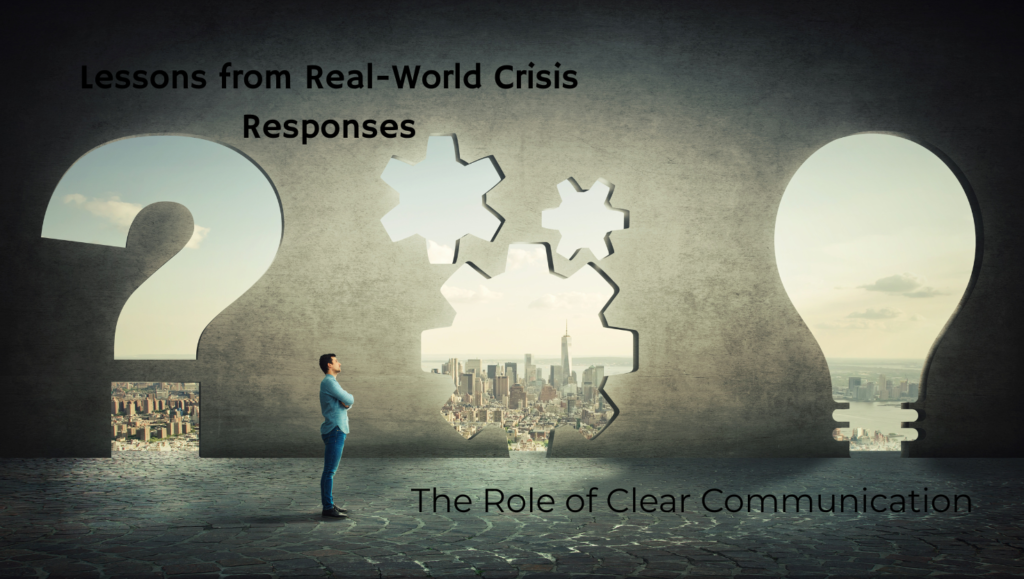
Clear Communication Can Make or Break a Crisis Response
Crises don’t come with warning labels, and when they strike, teams are often left scrambling to contain chaos. Whether it’s a natural disaster, a corporate PR nightmare, or a global health emergency, one thing remains constant: communication is the linchpin that holds everything together—or tears it apart.
Think of any major crisis in recent history. The organizations that managed to emerge relatively unscathed weren’t necessarily the ones with the best resources; they were the ones with the best communication strategies. They were transparent, timely, and structured in their approach, ensuring that employees, stakeholders, and the public knew exactly what was happening and what needed to be done.
So, what can we learn from these real-world crisis responses? And how can organizations improve their communication strategies to navigate challenges effectively? Let’s break it down.
Lessons from Real Crises: What History Teaches Us About Communication in Emergencies
1. Transparency Prevents Panic: Clarity Over Confusion
In a crisis, misinformation spreads faster than the crisis itself. The moment people sense uncertainty, they fill the gaps with speculation, leading to mass panic and poor decision-making. This is why transparency is critical—whether you’re dealing with a company-wide system outage or a full-blown public relations disaster.
Case Study: The Tylenol Poisoning Crisis (1982)

One of the best examples of effective crisis communication comes from Johnson & Johnson. In 1982, several bottles of Tylenol were found to be laced with cyanide, resulting in multiple deaths. Instead of downplaying the situation or withholding information, Johnson & Johnson immediately took action. They:
- Issued a nationwide recall of 31 million bottles.
- Maintained open and transparent communication with the public.
- Worked closely with law enforcement and the media to ensure accurate information was disseminated.
- Introduced tamper-proof packaging to prevent future incidents.
The result? Instead of losing consumer trust permanently, the company emerged stronger, proving that honesty and transparency during a crisis build long-term credibility.
Key Takeaway: Don’t sugarcoat or hide information. Acknowledge the issue, provide regular updates, and maintain open lines of communication with all stakeholders.
2. Pre-Defined Protocols Help: Structure Reduces Chaos
A crisis is not the time to figure things out on the fly. Organizations that fare well in high-stress situations are those that have pre-defined communication protocols. Having a crisis response plan ensures that messages are delivered in a structured, coherent manner, minimizing confusion.
Case Study: NASA’s Apollo 13 Crisis
“Houston, we have a problem.” The famous words from the Apollo 13 mission in 1970 marked the beginning of a crisis that could have ended in tragedy. But thanks to NASA’s meticulous communication protocols and crisis management strategies, the situation was handled with precision.
- NASA’s Mission Control maintained calm, structured, and detailed communication with the astronauts.
- A clear chain of command ensured that the right people made decisions swiftly.
- Every message was carefully crafted to relay only the essential information, preventing information overload.
- This structured approach prevented miscommunication, allowing NASA to guide the astronauts safely back to Earth.
Key Takeaway: Create a crisis communication playbook with predefined messaging frameworks, designated spokespersons, and clear communication hierarchies.
How Together Telling Enhances Crisis Communication
At Together Telling, we believe that great communication isn’t just about talking—it’s about ensuring that the right message reaches the right people at the right time. Here’s how we help organizations prepare for and navigate crises:
1. Providing Frameworks for Clear Messaging

Organizations often struggle with message clarity during crises. Conflicting statements, vague explanations, or emotionally charged responses can do more harm than good. Together Telling provides structured communication frameworks to:
- Ensure consistency across all messaging platforms.
- Maintain a balance between speed and accuracy.
- Prevent misinformation by vetting messages before dissemination.
2. Implementing Crisis Communication Drills
Having a crisis plan is one thing; knowing how to execute it under pressure is another. That’s why we conduct hands-on crisis communication drills, simulating real-world emergency scenarios to train teams in:
- Quick decision-making under stress.
- Managing press and public relations effectively.
- Adapting communication strategies in real-time based on evolving situations.
Final Thoughts: Preparation is Key
Crisis situations demand precise and timely communication to avoid disaster. As history has shown, organizations that communicate transparently and follow structured crisis protocols not only manage crises better but also strengthen trust with their stakeholders.

In the end, the question isn’t if a crisis will happen—it’s when. And when it does, will your team be ready to communicate effectively?
With Together Telling’s crisis communication strategies, you’ll be prepared to navigate even the most complex challenges with confidence, clarity, and control.
FORBES: Learning From Crisis Communication Mistakes And Successes

